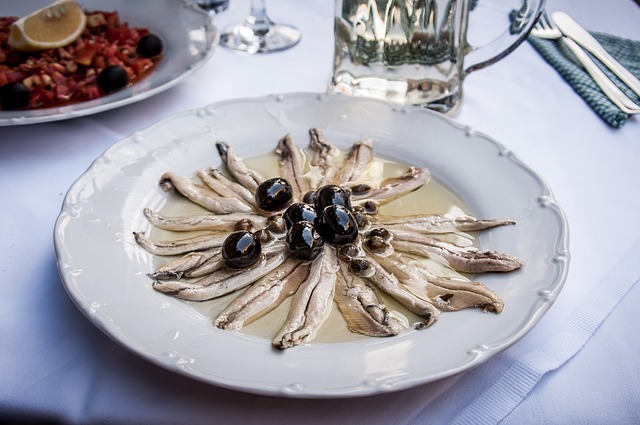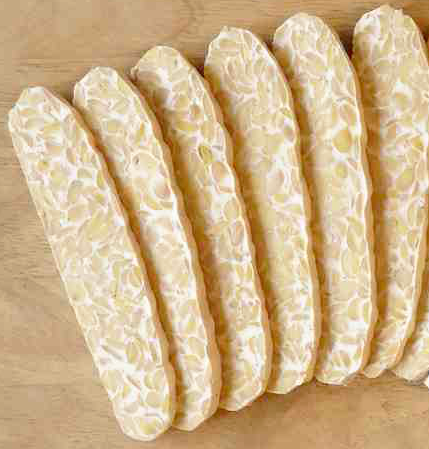Nuts, a great source of protein and good fats, are best kept away from oxygen, heat and light. Fresh, dried, and cooked nuts are all delicious and useful flavours and textures.
Nuts are best bought fresh and used before their oils have a chance to go rancid and ruin the flavours. Most nuts are already rancid by the time you get them (where have they been all this time?), so find yourself a good nut supplier who cares about the source of their nuts. It makes a huge difference to the flavour.
Storage
You can store nuts safely in the freezer for up to two years, or in the fridge for up to one year in an airtight container.
_____
Almonds (Prunus amygdalus, Prunus dulcis)
Almonds, actually seeds, are sold whole, sliced, blanched, and slivered, skinned and whole, as flour, meal, paste, and other products. The almond flavour is mild and sweet. The almond is a relative of the peach and is technically a seed. Major producers are California, Spain, Portugal and Italy. There are hundreds of varieties for sale, however the soft-shelled nonpareil grown in California is the most commonly sold.
Indian and Middle Eastern dishes use almond a lot in curry, biryani and pilaf, often accompanied with saffron. Also used often in desserts, sometimes toasted. Can be made into milk and nut butter. Add syrups, honey, cinnamon or salt to nut butter for flavours.
Buy raw almonds and then make them into whatever you fancy – buying them already roasted or coated means usually more ‘junk’ ingredients. Cool completely after toasting before pureeing or food processing, or they’ll become sticky.
Marcona Almonds (Prunus dulcis)
These are slight variant on regular almonds, being sweeter, more tender, and delicate, found in Spain roasted and salted as a snack. If cooking with marcona almonds, use them raw. They are used in desserts, snacks, and tapas treats.
Brazil Nuts (Bertholletia excelsa)
This large nut is crunchy, with a mild flavour. The story of Brazil nuts is a complicated one – the softball-sized pods fall from the trees, killing at least one person every year, however the nuts are always collected from the wild. There are no Brazil nut plantations. Every year that the forest dwindles due to burning and deforestation, more beautiful Brazil nut trees disappear, and the price goes up.
These nuts make a great snack, and to crack up and use in salads and other ‘soft’ dishes to add texture.
Candlenuts (Aleurites moluccanus)
These are also known as ‘Indian walnuts’, and are used traditionally in Malaysian and Indonesian food. You can also use this nut as a candle due to its high oil content, and for snacks.
Cashews (Anacardium occidentale)
Cashews are common in certain cuisines (Thai, Indian), particularly for creating curry sauce bases. Cashews have an oily, soft-but-crunchy nut that adds texture and creaminess to sweet and savoury dishes, added as a thickening agent. The flavour is rich, and can be eaten raw, salted, sugared, chocolated, or roasted. Cashews are naturally shell-less, and therefore are technically a seed. India and Brazil grow the most globally-sold cashews.
Can be made into yoghurt and milk, but are definitely more delicious roasted than raw.
Flavours depend on where the nuts are grown:
- Vietnam – crisp, white, sweet (well regarded)
- Brazil – large, softest, whitest, sweeter and richer than others
- African – smaller, crispier than Brazilian
- Indian – smaller, ivory, crispier than Brazilian, sweet or bland
Pine Nuts (Pinus pinea, P. cembroides, P. koraiensis, P. cembroides, P. cembroides var. monophylla, P. cembroides var. edulis)
Pine nuts are soft and chewy with a mild pine flavour. These nuts are often more tasty when toasted or crushed into pesto, where the flavours are spread out. They are not a snacking nut.
Hazelnuts (Corylus avellana)
Hazelnuts are of course the main ingredient in Nutella, with a lovely pairing made between hazelnuts and chocolate. You can eat them raw, but roasted until crunchy then removing the bitter skins is the best way to eat them. Add to salads and soups, or make into delicious milk.
The Mediterranean area produces almost all hazelnuts sold globally. Rub the skins off freshly-cooked hazelnuts by putting them into a paper towel and rubbing gently.
Pistachios (Pistacia vera)
The pistachio is technically a seed, and is a key ingredient in several dishes and desserts (baklava, halvah, etc.). Turkish and Persian varieties are best for flavour. The Kermit variety is grown in California, however until fairly recently, these nuts were only gathered from mountainside villages in Turkey, Afghanistan and Iran. Pistachios are delicious eaten out of the shells, roasted and salted. It’s better to buy these in their shells (it’s expensive to buy shelled pistachios), but additionally, the nuts can be too salty if directly out of the packet and into the mouth. The shells can be sucked to get the salt powder off.
Walnuts (Juglans regia)
Great for baking, easy to find in shells. Flavours are slightly bitter and dry due to high tannins, but this astringency makes them good for matching with sweet flavours. China and the United States produce the most walnuts globally.
They go well with fruits like apples, cherries, pineapple, and bananas, cheeses, and dates, and are used in a variety of dishes from bread, cake, sweets and pastries.
Delicious, buttery sweet flavour that goes well with fish, and in baking, especially biscuits/cookies. Great for making dairy-free salad dressings. These nuts have the highest levels of monounsaturated fats and are slow to go rancid. Can be made into a delicious, sweet milk. You can also make macadamias into pestos, and to cut the expense, add other nuts too, but keep the macadamia flavour.
Peanuts (Arachis hypogea)
Technically a legume, peanuts are used like nuts in cooking. Cheap, available year-round, peanuts are earthy, with a flavour that is only enhanced with roasting. Raw peanuts in their shells are better the fresher they are, but make an easy snack no matter what. Fungi is a problem with peanut storage, and these toxins can cause health problems in humans. Consider where your peanuts originate and what their health and safety standards are likely to be regarding these moulds and fungi.
Peanut dishes include satay sauces, popular in many Asian cuisines, plus of course roasted, salted peanuts, and peanut butter of your crunchy or smooth desires.
There are several varieties of peanut:
- Spanish peanuts – rich flavour, good for roasting, more ‘gourmet’ type
- Virginia peanut ‘jumbo runner’ – larger, oblong, often sold in-shell, nutty
Pecans (Carya illinoinensis)
Pecans are grown mainly in Georgia and Texas (USA), and are used mainly in baking, particularly pecan pie.
Kola Nuts (Cola acuminata, C. nitida)
Kola nuts are used – you guessed it – to flavour cola drinks in western countries, but in Africa, kola nuts are special – chewed individually or in a group setting, presented to special guests. Taste is first bitter, then sweet, with the smell sweet and almost rose-like. The nuts contain caffeine and other stimulant components.
Lotus Nuts/Seeds (Nelumbo nucifera)
Another true seed, lotus nuts are used in Asian and Colombian food, traditional Chinese medicine, and eaten in desserts shelled and dried. They can be eaten raw as a snack. Indians use the seeds to make a milk pudding, and Chinese use them in pastries.



